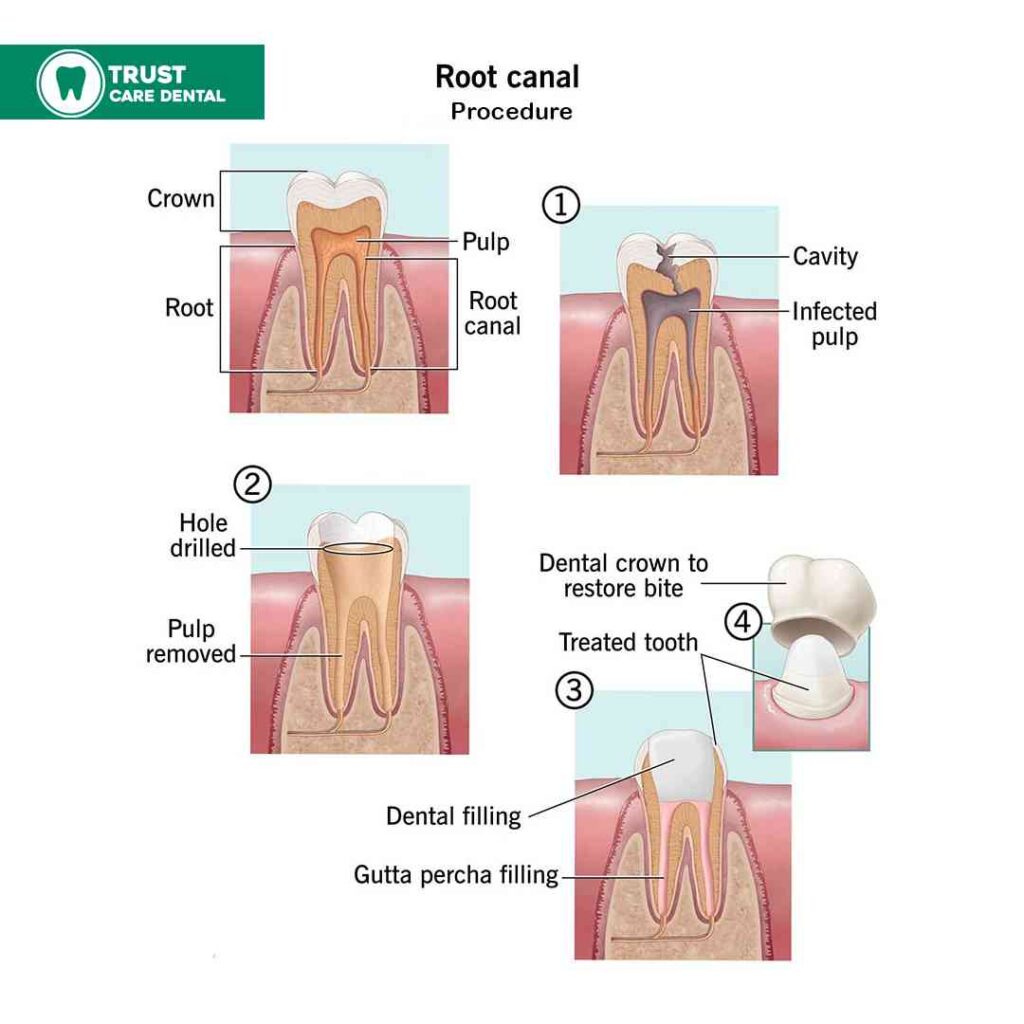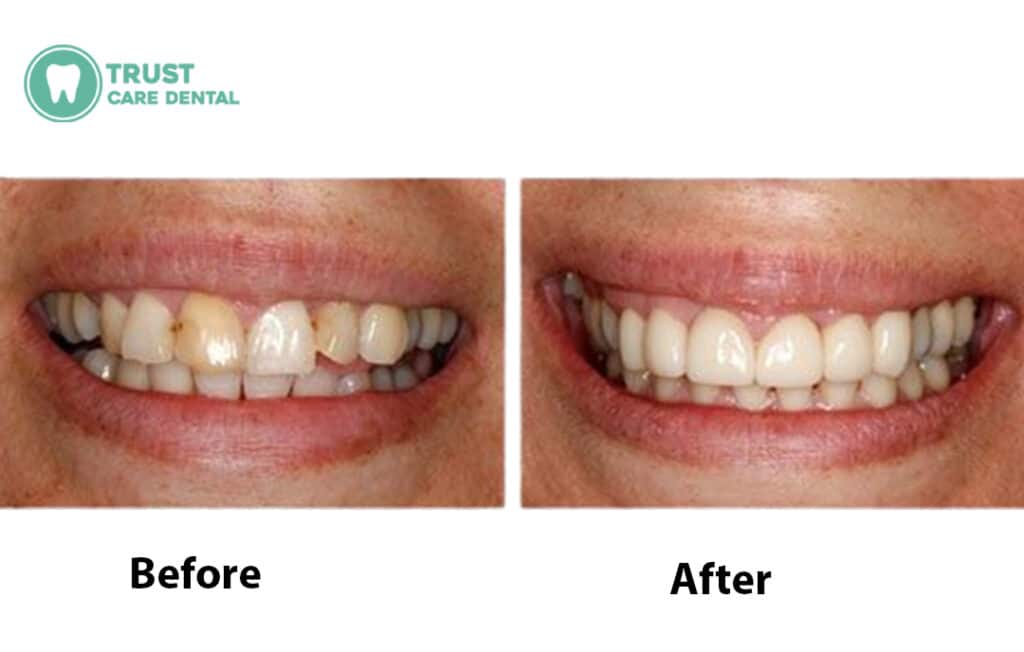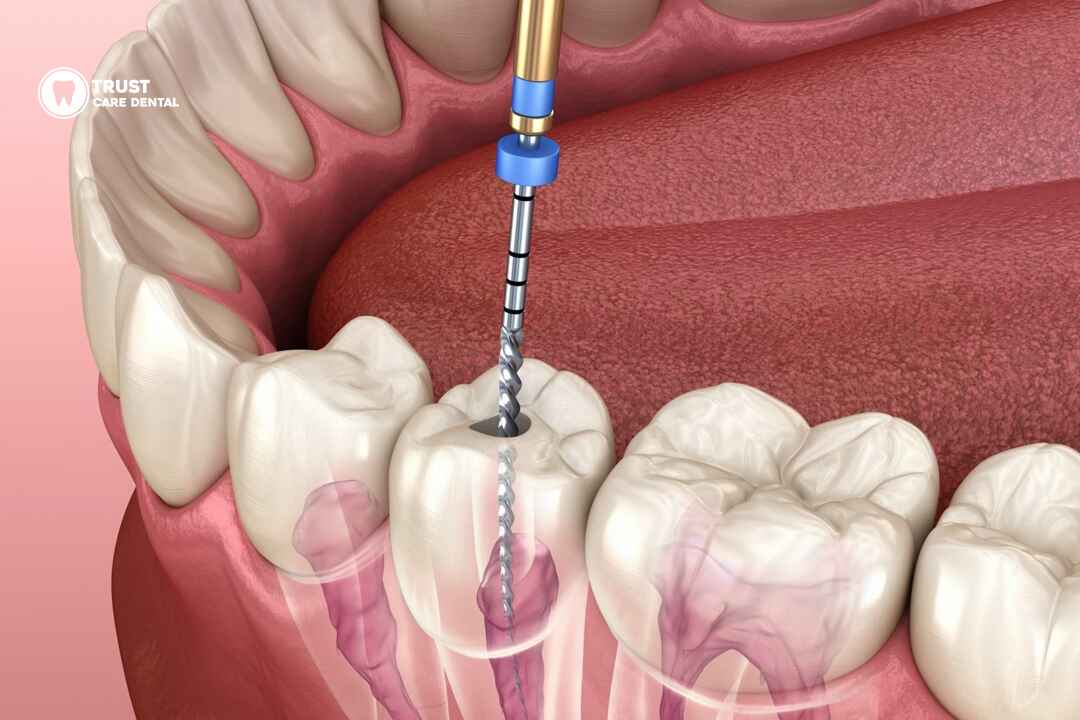Everything You Need to Know About Root Canal Therapy
A root canal treatment is a dental surgical procedure to remove the infected pulp from the inside of the tooth. In this procedure, the doctor carefully disinfected the tooth and cleaned it. Root canal therapy is designed to remove the bacterial infection that infected the root of the tooth deeply, prevent reinfection, and save your natural teeth.
As we know dental care is very important and ignoring the problems can lead to severe tooth pain. It can also cause infections that spread. Early treatment may prevent these issues keep your mouth healthy and maintain natural teeth.
Root canal therapy benefits include pain relief and saving your tooth. It also prevents the spread of infection. It helps you avoid more complex dental procedures.
Did you know that 15 million root canals are done every year? That’s a lot of saved smiles! Let’s explore why this procedure might be just what you need.
What Happens During the Procedure of the Root Canal?

Do not be afraid when your doctor or endodontist prescribes a root canal treatment and procedure to cure the damaged tooth. There are so many teeth in the quantity of millions are treated and saved this way in each year. Inside the tooth is a white hard layer of enamel called dentin. It is a soft tissue also called pulp. This pulp contains the blood vessels, nerves, and connective tissue which help you to grow the root of the tooth. A fully developed tooth can survive without the pulp because the tooth continues to be nourished by the tissues that are present around it.
A modern root canal treatment is not much more different from the old. It is really similar to a routine of fillings and mainly completed in the duration of one or two appointments. Root canal depends on the condition and problem of your tooth and your circumstances. Getting the therapy of a root canal is a very effective pain relief method. Through this procedure, you will get back your teeth and smile.
Common Reasons for Needing the Procedure
Reasons: | Explanation: |
| Bacteria can enter the tooth through cracks, chips, or deep cavities, leading to infection. |
| When cavities penetrate deep into the tooth, they can infect the pulp. |
| Physical injury to a tooth, such as a crack or chip, can expose the pulp to bacteria and lead to infection. |
| Doing multiple procedures on the same tooth can cause damage to the pulp over time. |
When Do You Know About Getting Root Canal?
Symptoms that Indicate a Root Canal Requirement
- Persistent tooth pain: If you experience ongoing pain in your tooth, it may be a sign of infection.
- Sensitivity: A tooth sensitive to hot or cold temperatures for a long time can indicate pulp damage.
- Swelling and tenderness: Swelling around the gums or tenderness when you touch the tooth could mean an infection.
- Darkening of the tooth: A tooth that becomes discolored might have an infected pulp.
- Pimples on the gums: Pimples on the gums near the painful tooth can be a sign of an abscess.
Advice on When to Seek Professional Evaluation
- If you have any of the symptoms listed, seeing a dentist is best.
- Early treatment can prevent long-lasting damage and pain.
- Regular dental check-ups help in catching problems early.
Is a Root Canal Painful?

We are grateful to local anesthesia because a root canal procedure is not much more painful than a standard dental treatment like getting a filling or having a wisdom tooth removed. After the procedure is done, it is normal to feel some soreness or mild discomfort may linger for a few days as the area heals.
How do you know if you need a root canal?
A root canal may be necessary if you have a cracked tooth, whether due to injury, genetics, or a severe cavity or if there are complications from a previous filling. Common signs that you may need a root canal include increased sensitivity to hot or cold temperatures that don’t fade away quickly, even after the source is removed.
How much is the Cost of Root Canal Treatment?
The cost of root canal therapy varies and changes according to minute to severe conditions. Molars are the more difficult to treat that’s why the cost is usually more. Most dental procedures do some coverage for endodontic treatment. Generally, the endodontic treatment is less expensive rather than the tooth extraction method. An extracted tooth must be replaced with an implant and prevent the adjacent teeth from shifting. This kind of procedure tends to cost more than the endodontics treatment and appropriate treatment.
Benefits of Root Canal Treatment Over Tooth Extraction
|
|
|
|
|
|
|
|
|
How Long Does a Root Canal Take?
The root canal procedure can vary based on the factors of like location of the tooth, and the level of the infection also, the complexity of the root structure. They take typically one to two hours, and more complicated cases might take multiple visits and sessions. After the first visit, the dentist will examine the affected tooth and take multiple X-rays to determine the situation. At this time also provide local anesthesia to ensure comfort throughout the procedure. Once the area is numb, the dentist creates an opening in the tooth to reach the pulp chamber and root canals.
Using specialized tools, the dentist then carefully removes the infected or damaged pulp tissue, cleans and shapes the root canals, and flushes the area to clear out any remaining bacteria or debris. If the infection is severe, a medicated solution may be applied to help eliminate lingering bacteria and reduce inflammation.
After cleaning and disinfecting, the root canals are filled with a biocompatible material to seal the area and prevent future infections. In some cases, a temporary filling is placed to protect the tooth until a permanent solution, like a crown, can be applied.
Taking Care of Your Tooth After a Root Canal
After a root canal on a front tooth, it’s normal to feel a little sore or sensitive. You can usually manage this with medicine from the drugstore. Sometimes, your dentist might give you antibiotics to make sure any infection goes away completely. Keeping your teeth clean by brushing, flossing, and visiting the dentist regularly will help your teeth stay healthy.
Sometimes, the dentist may suggest ways to make the tooth look better, like whitening it or adding a veneer, especially if the tooth changes color.
Since everyone heals differently, keep an eye on how you feel. If you have pain or swelling that doesn’t go away, call your dentist to get it checked out.
Tooth Color After Root Canal Treatment

A healthy, natural tooth typically has a yellowish-white color due to the presence of healthy pulp. However, after a root canal treatment, if the tooth is sealed with a filling instead of being covered with a crown, it may gradually turn grey over time. This discoloration occurs because the tooth no longer has a living pulp inside. If you’re concerned about the appearance of your tooth, your dentist can recommend cosmetic dentistry treatments, such as whitening or veneers, to improve its look.
Who Can Perform Root Canal Treatments?
All general dentists are trained to perform root canal treatments. However, in cases where the procedure is more complex or urgent, your dentist may refer you to an endodontist. An endodontist is a dental specialist who focuses on diagnosing and treating issues related to the inside of the tooth, particularly root canals. If you prefer to get a specialist’s opinion, you can always ask your dentist for a referral to an endodontist.


